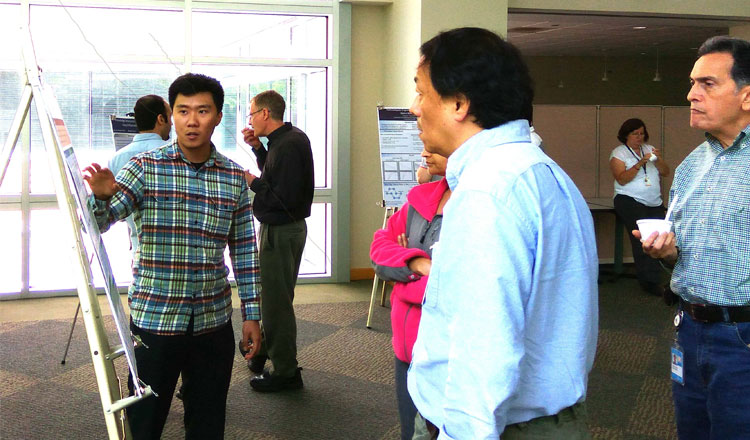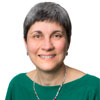
Last year, we invited universities and research institutions to participate in our first ever AT&T SDN Network Design Challenge. SDN stands for software-defined networking. And the challenge was to create a network that allowed information – think movies, music, navigation and social media – to travel to and from your mobile devices smoothly.
The challenge gave us a better understanding of the different possibilities for improving network routing within a software-centric environment. After receiving several submissions, we named Cornell University the AT&T Network Design Challenge winner. As the winner, Cornell received $50,000 and a summer internship at AT&T Labs for a student from the team.
Shih-hao Tseng, a PhD student at Cornell, spent the summer as an intern, applying the abstract thinking skills he developed in school to AT&T’s real-world data. He worked with my team to create models that help ensure our network is reliable and cost-effective.
As the lead for AT&T Labs’ Platforms and Architecture organization working to optimize our network, I sat down with Shih-hao. We spoke about his passion for STEM and his experience as an intern.
Kathy: When did you become passionate about science/engineering?
Shih-hao: I’ve always been good at math and physics. And thanks to great teachers and inspiring lab sessions in high school, I realized I liked solving problems. Those factors influenced my decision to major in electrical engineering in college. Now, I can apply my knowledge in math and physics to real-life problems.
Kathy: What did you want to be “when you grew up?”
Shih-hao: As a kid, I loved playing computer games and my dream was to create my own game as a programmer. But after studying math and physics in high school, I decided to become a scientist. Now, I’m an engineer, using my passion for programming and math to solve real problems.
Kathy: Who is your science and engineering idol? What did he or she invent?
Shih-hao: I don't have a specific idol, but people and their work inspire me. Some of those are Albert Einstein and his Theory of Relativity; Leonhard Euler and his works in math, including Euler's Formula; James Clerk Maxwell and his Maxwell's Equations.
All of their work provides simple, yet elegant, ways to understand complicated topics.
Kathy: What did you work on at AT&T?
Shih-hao: I focused on making AT&T’s network more reliable for customers. I designed algorithms that helped solve stability issues in the network.
Kathy: What are the biggest differences between your internship work and school?
Shih-hao: The biggest difference is the type of problems we encounter. At AT&T, the focus is on the frontier of the technology. The problems we solve have an industrial impact. In school, however, we try to solve problems that may occur in the future. So in a sense, they are more like prototypes, not mature products.
Kathy: Were you able to apply what you've learned in school to your internship at AT&T? If so, what?
Shih-hao: Yes, my work at AT&T builds off what I’ve learned in school – modeling, optimization, network simulation and algorithm design.
Kathy: How well do you feel your internship work prepared you for a full-time job?
Shih-hao: My internship work helped me prepare for the real world by giving me a deeper understanding of how the network operates.
Kathy: Where do you see yourself in 5 years?
Shih-hao: I plan to have a PhD degree by then. My PhD is focusing on system optimization, so my projects will likely relate to network or interconnected devices.
Kathy: What are the 3 most valuable things you learned from your internship?
Shih-hao: The most straightforward thing is the knowledge I gained on the operation of the network. I learned how software-defined networking works and its impact on the industry.
Second, the speakers from AT&T Labs’ summer speaker series provided a great overview of the different parts of the company. I especially liked Chris Volinsky’s talk about Big Data. And yours, Kathy, focusing on the ORCA department, also known as Optimization, Reliability and Customer Analytics.
Last, I loved being able to talk to you and the leadership team about your views on the future of innovation. I’ve learned how managers make decisions – by looking at the problem thoroughly and taking into account the technology, cost and research advantage.

Kathy Meier-Hellstern - Assistant Vice President in the AT&T Advanced Technology Platforms and Architecture organization